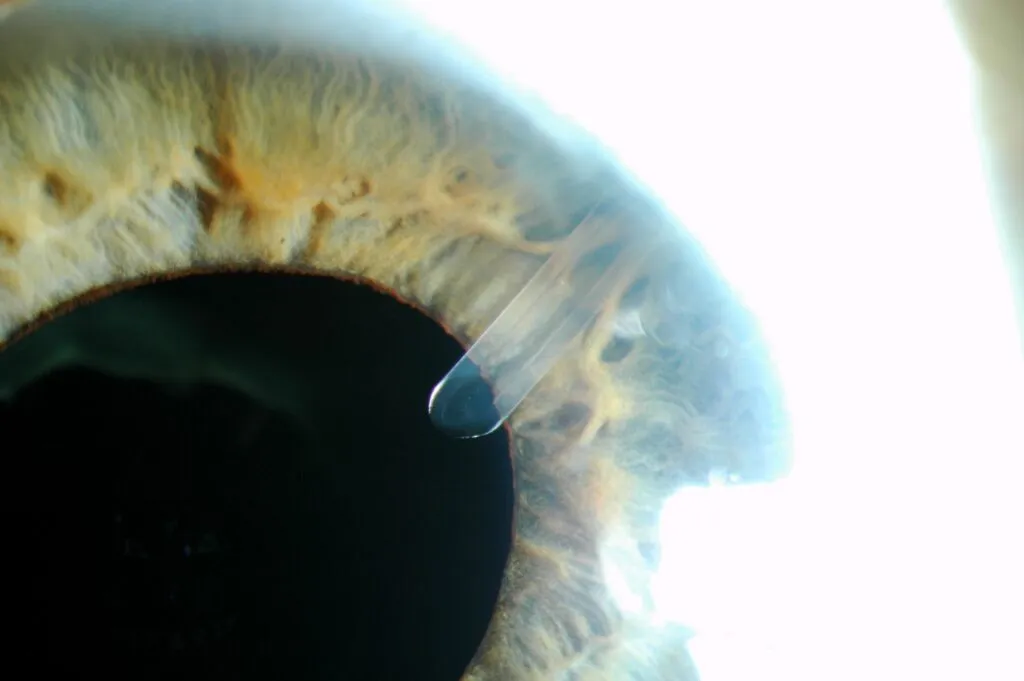Treatments
Glaucoma drainage devices

What are glaucoma drainage devices?
Glaucoma drainage devices are implanted in different locations in the eye to facilitate drainage of the aqueous humour (fluid that bathes the eye structures) to the outside. When this drainage mechanism is altered and fluid accumulates excessively, there is an increase in pressure inside the eye that can damage the optic nerve and cause irreversible vision loss.
The surgery basically consists of inserting a drainage tube with a reservoir, also called a plate, that runs from the intraocular space to the subconjunctival area (below the conjunctiva) to allow the aqueous humour to exit and achieve a decrease in intraocular pressure. Depending on the case, the drainage tubes may be equipped with valves that regulate the fluid output.
This is a procedure we can perform individually or along with other surgeries, such as a cataract surgery, a corneal transplantation or a vitrectomy, and we will place the drainage tube in one part of the eye or another accordingly.
Eye diseases treated by drainage valves and devices
Drainage devices allow treating all types of glaucoma and can be a secondary procedure after filtering surgeries, such as non-penetrating deep sclerectomy or trabeculectomy. They can also be the surgical technique of choice when the aforementioned surgeries are not expected to provide good results or are not feasible, for example, if you have closed-angle glaucoma or, besides glaucoma, you have other eye problems, such as a transplanted cornea, diabetic retinopathy or retinal detachment.
Recovery
The implantation of drainage devices for glaucoma is an outpatient procedure, which requires about 45 minutes of surgery and which we perform under local anaesthesia and sedation to avoid discomfort during surgery and promote your peace of mind throughout the process.
We perform this ophthalmological surgery using increasingly less invasive techniques that have greatly reduced the risk of complications. However, at the end of the surgery it is important that you comply with the prescribed anti-inflammatory and antibiotic treatment to avoid infections and speed up the recovery of tissues. At the Miranza clinics, we will inform you in detail of the guidelines and follow-up visits you should follow, bearing in mind that glaucoma is a chronic disease that requires constant and regular monitoring.